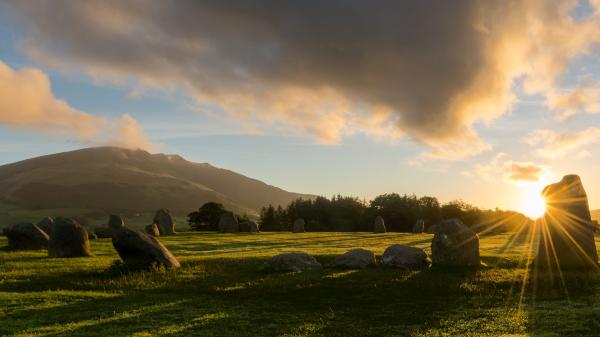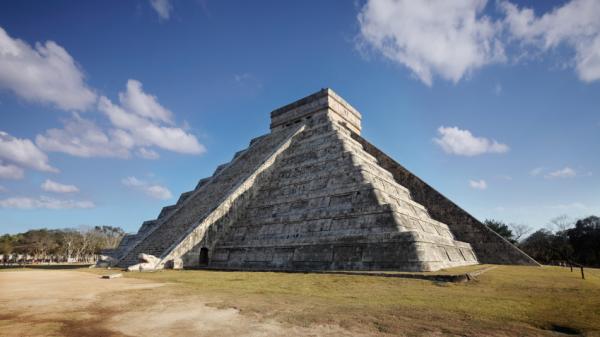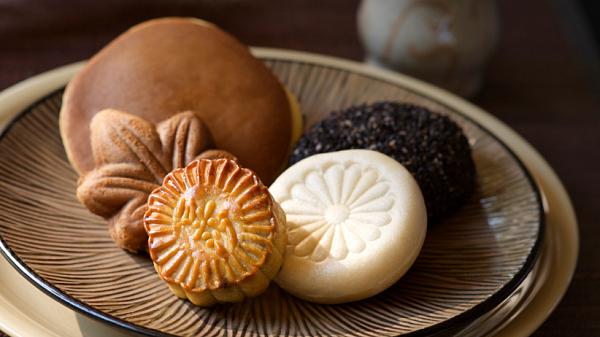Customs Around the September Equinox
The September equinox marks the start of fall in the Northern Hemisphere and has inspired ancient myths, religious festivals, and customs.

Ripe grapes in September. Most traditional celebrations of the autumnal equinox are associated with harvest.
©iStockphoto.com/Rostislav_Sedlacek
Start of a New Season
Every year there are two equinoxes and two solstices, which mark the start of a new astronomical season. For millennia, these four turning points have played important roles in human culture.
The myths and traditions described below are rooted in cultures of the Northern Hemisphere, where the September equinox is the autumnal (fall) equinox. Seasons are opposite on different sides of the equator, and in the Southern Hemisphere, it is the vernal (spring) equinox.
Harvest Time
As leaves turn yellow and fruits and vegetables ripen, most traditional celebrations of the autumnal equinox, when day and night are nearly equal, are associated with harvest.
Persephone's Return to the Underworld
The Romans held a festival dedicated to Pomona, goddess of fruits and growing things. However, the most famous ancient myth comes from Greece.
In Ancient Greek mythology, the onset of fall is closely linked to the story of the abduction of Persephone, also called Kore or Cora. She was a goddess who was abducted from her mother, harvest goddess Demeter, and taken to the underworld to become the wife of Hades, the god-king of the underworld.
After a period of mourning and struggle, Demeter eventually got her daughter back from Hades, but only for nine months of the year. Every fall, Persephone would return to the underworld to spend three months with Hades. During these months, Demeter refused to use her divine skills to make plants grow, explaining why we have three months of winter every year.

Sunrise at the megalithic stone circle Castlerigg in Cumbria, UK.
©iStockphoto.com/Daniel_Kay
Neopagan Celebration: Mabon
Mabon is a relatively modern Neopagan celebration, which takes place around the September equinox.
In the 1970s, American author Aidan Kelley assigned new names to the six Sabbats rooted in ancient Celtic lore and added two new celebrations of his own around the September and March equnioxes. The Sabbats are celebrations based on the cycles of the sun.
Inspired by a proper name derived from the Welsh word mab/map, which means “son” or “boy, Kelly chose Mabon as the name for the autumnal equinox celebration, and he based the ceremony that he composed for the festival in the Greek myth of Persephone. Mabon celebrates the second harvest and the start of winter preparations, and it is the time to respect the impending dark while giving thanks to the sunlight.
In the UK, followers of the Wicca religion, druids, and pagans also gather at Stonehenge, the famous 5,000-year-old site in Wiltshire, and at Castlerigg, another megalithic stone circle near Keswick in Cumbria, to watch the sunrise on the day of the equinox.
From Higan to Chuseok: Holidays connected to astronomic events
Christianity
The Christian church replaced many early Pagan celebrations with Christianized observances. The most widely celebrated is Christmas, which replaced the ancient Yule festival around the December solstice. The Christian celebration closest to the September equinox is Michaelmas, also known as the Feast of Michael and All Angels, on September 29.
These days, Michaelmas is a minor festival mainly observed in the Catholic church. Centuries ago in England, the time around Michaelmas also had a business side. Servants were paid their wages after the harvest, and workers looked for new jobs at employment fairs which also became a place for celebrations.

The “snake of sunlight” appears at the equinox.
©iStockphoto.com/CostinT
The Mayan Snake of Sunlight
At the precise moment of the equinox, when the Sun shines directly on the equator, an enormous “snake of sunlight” slithers down the stairs of the main pyramid at Chichen Itza, Mexico. The Mayans who constructed this ancient temple used advanced astronomical calculations to determine the exact angle of the staircase.
Six Days of Higan in Japan
Higan, or Higan-e, is a six-day Buddhist celebration in Japan during both the September and March equinoxes. Both equinoxes have been national holidays since the Meiji period (1868-1912). Higan means the “other shore” and refers to the spirits of the dead reaching Nirvana. It is a time to remember the dead by visiting, cleaning, and decorating their graves.

Traditional Mooncakes are served during the Chinese Mid-Autumn Festival.
©iStockphoto.com/NightAndDayImages
Moon Festival in China
The Mid-Autumn Festival, also known as the Moon Festival, is celebrated in Chinese and Vietnamese communities all over the world on the day of the Harvest Moon, which is the Full Moon closest to the September equinox.
The Moon festival celebrates the abundance of the summer's harvest, and people serve mooncake filled with lotus, sesame seeds, a duck egg, or dried fruits.
Navaratri
Navaratri is a Hindu festival which lasts several days in the autumn. The festival honors the divine feminine Devi (Durga) and is celebrated in the first half of the Hindu calendar month Ashvin, which falls in the months of September and October.